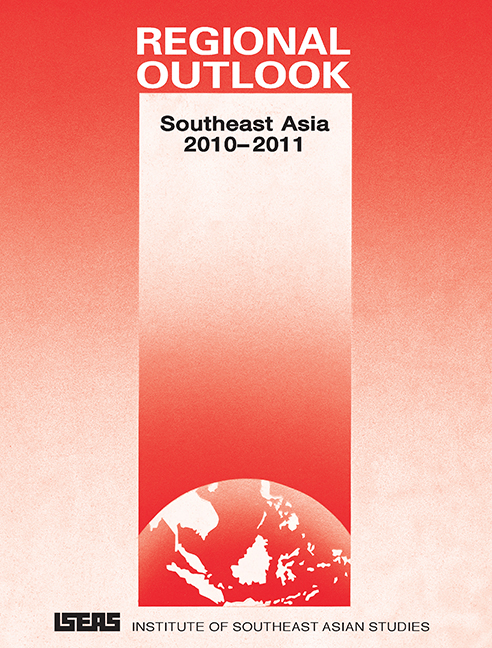The ASEAN-10
from POLITICAL OUTLOOK
Published online by Cambridge University Press: 21 October 2015
Summary
Brunei Darussalam
As the most stable, predictable and wealthy of the Southeast Asian states, Brunei Darussalam is in no hurry to change the status quo. This generalization applies to the governmental apparatus as well as the peoples' attitudes. The next few years will see continuity in present policies and processes, although some issues may be addressed more vigorously than in the past. One such issue must surely be the country's general complacency with its comfortable economic status, a result of income from the oil and gas sector. Confidence has been shaken to some extent by the volatile energy markets of the recent past. A search for alternative means of maintaining comparable income levels and the comfort and expectations of the society has to some degree begun.
A small state of about 390,000 people with a low annual rate of population increase, Brunei will continue to enjoy the benefits of its oil and gas income, overseen by a centrally managed political system under the Malay Islamic Monarchy. However, the main worry continues to be over its economic rather than its political system. As long as oil prices remain relatively high, it will bode well for the country in the medium term, as hydrocarbon reserves are still being discovered and added to sources of national income. Thus it is thought that national leaders expect the oil and gas sector to play a central role at least for the next two decades, even as they insist on the diversification of the economy. Efforts to shake off complacency seek to gear the population towards evolving into committed and productive citizens of the state.
- Type
- Chapter
- Information
- Regional OutlookSoutheast Asia 2010-2011, pp. 20 - 62Publisher: ISEAS–Yusof Ishak InstitutePrint publication year: 2010



